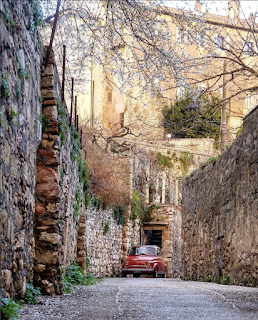 Amelia,Amelia Art Crime Conference,Art and Crime
Amelia,Amelia Art Crime Conference,Art and Crime
 No comments
No comments
Registration Now Open for ARCA’s 2025 Amelia Conference on Art Crime and Cultural Heritage Protection
Collegio Boccarini (adjacent to the Museo Civico Archeologico e Pinacoteca Edilberto Rosa)
The Association for Research into Crimes against Art (ARCA) is pleased to announce that registration is now open for its 13th Annual Interdisciplinary Art Crime Conference, taking place from June 21–22, 2025 in the historic town of Amelia, Italy. As the seat of ARCA’s renowned Postgraduate Certificate Programmes in Art Crime and Cultural Heritage Protection, Amelia offers the ideal setting for the Association's annual thought-provoking event.
This year’s conference will kick off with a welcome cocktail on the evening of Friday, June 20, providing an opportunity for early networking among speakers and attendees. The main program will span two full days of panels and presentations on Saturday and Sunday, June 21–22, hosted at the Collegio Boccarini, adjacent to the Museo Civico Archeologico e Pinacoteca Edilberto Rosa in the heart of Amelia’s centro storico.
The Amelia Conference continues ARCA’s longstanding commitment to fostering critical dialogue and cross-disciplinary collaboration on pressing issues related to art crime, cultural heritage protection, and the illicit trafficking of cultural property. This annual gathering brings together experts from international organisations, universities, law enforcement, academia, cultural institutions, and the art market to explore practical solutions and forward-thinking strategies to better safeguard our shared cultural heritage.
Call for Presenters - Extended Deadline:
Due to a few cancellations, we are still accepting abstract submissions for the 2025 conference. The extended deadline for proposals is April 15, 2025.
Conference sessions are designed to reflect the growing complexity of art and heritage crime and the expanding range of disciplines engaging with these challenges. This year’s panels will feature 75- to 90-minute sessions, each comprising 15–20 minute presentations by invited speakers, with ample time for Q&A and moderated discussion. Presenters are encouraged to focus on key themes or case studies relevant to current challenges in art crime, with the aim of encouraging thoughtful—not combative—dialogue among peers. Some sessions may also include panel-style debate or showcase diverse perspectives on a given topic.
Whether you are an academic, a museum professional, a law enforcement officer, or a member of the private sector working to protect cultural property, we invite you to attend and share your insights and contribute to this important conversation.
Registration:
To register for the 2025 Amelia Conference, please visit our Eventbrite registration page. Early registration is encouraged, as lodging in and around Amelia is limited and this event regularly reaches capacity.
We look forward to welcoming both returning attendees and first-time participants to Amelia this June. Join us in one of Italy’s most charming towns for an unforgettable weekend of presentations, connections, and in invigorating a shared commitment to protecting the world’s cultural legacy.For more information about the conference, to submit an abstract, or accommodation suggestions, please contact us at:
italy.conference (at) artcrimeresearch.org

















